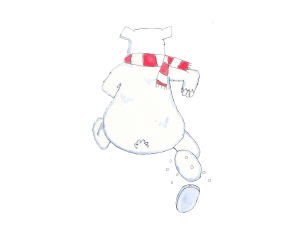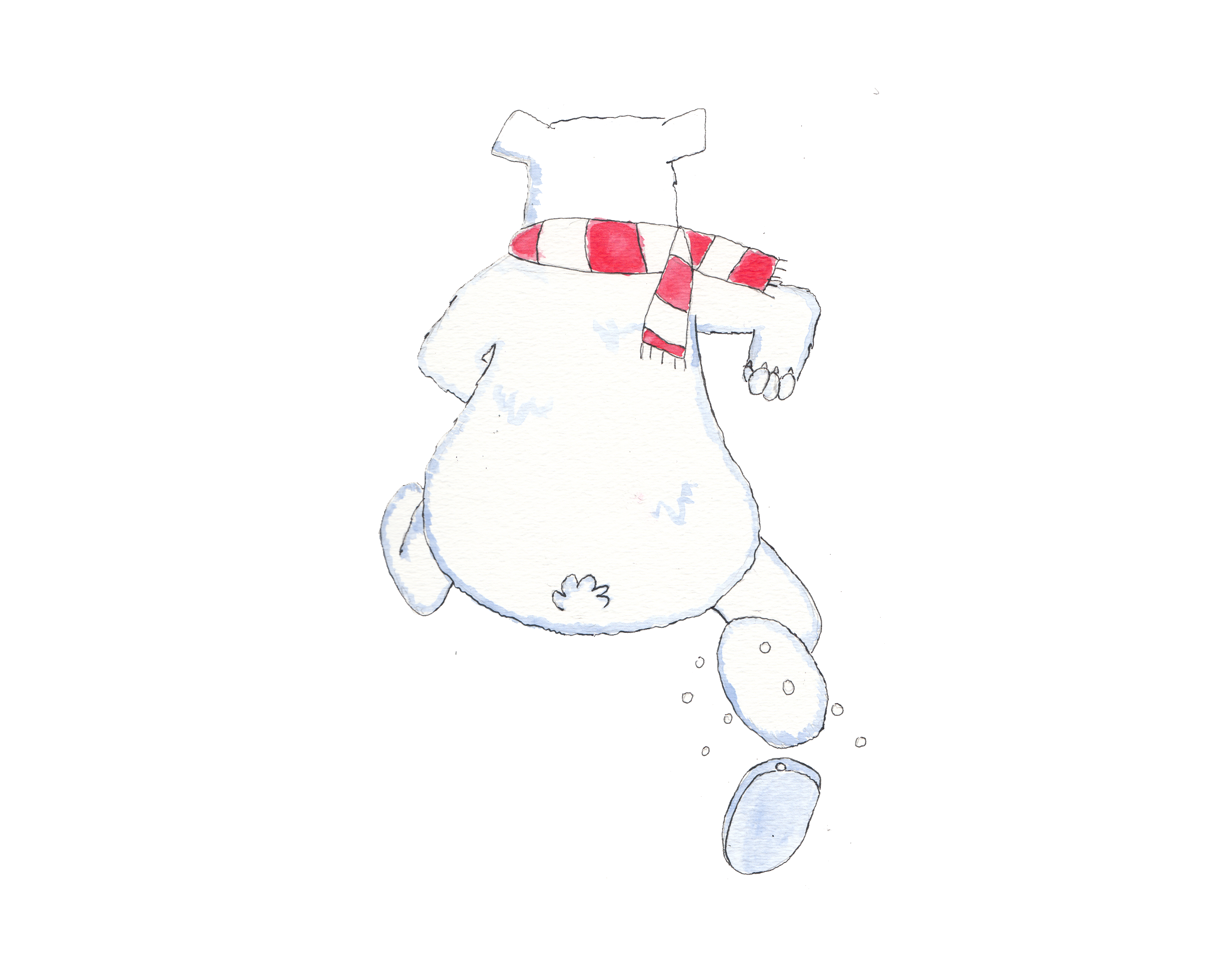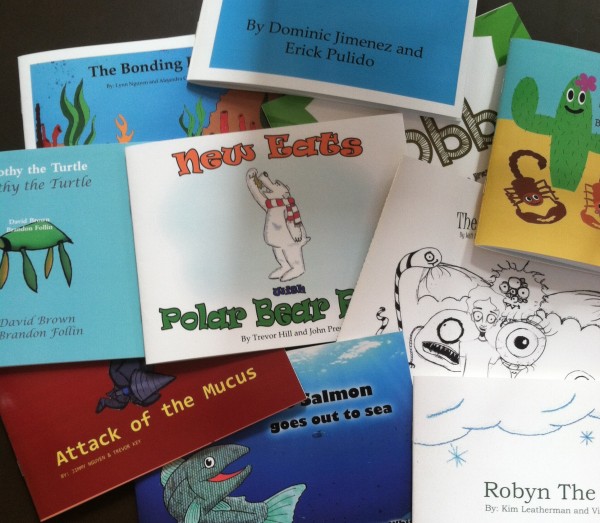 “ ‘Help!’ cried a bear, ‘I come with bad news!’
“ ‘Help!’ cried a bear, ‘I come with bad news!’
‘Come with me quick, there’s no time to lose!’
The people sailed by and left very fast,
behind them they left all their oil and trash.
When their homes were filled up by garbage and waste,
the seals couldn’t take it and left with all haste.
When the seals all left and said ‘too-da-loo!’
the bears had to find a new source of food.”
Trevor and John spoke eagerly to the room full of graduate students. The authors had come to give us a sneak peak of their children’s book, “New Eats with Polar Bear Pete.” They went on to introduce their main character, the illustriously fluffy, Polar Bear Pete.
 Pete was a very unusual polar bear in that he preferred to eat leafy seaweed. My kind of bear, but very unusual behavior indeed. As the story progresses the greater polar bear community begins to suffer from depleting seal populations (normal polar bear food) and they turn to Pete for help, eventually making him the hero of this tale.
Pete was a very unusual polar bear in that he preferred to eat leafy seaweed. My kind of bear, but very unusual behavior indeed. As the story progresses the greater polar bear community begins to suffer from depleting seal populations (normal polar bear food) and they turn to Pete for help, eventually making him the hero of this tale.
As the authors finished their fable to a great round of applause, they revealed their real life plot twist. This narrative was not one of fiction, but rooted completely in the peer-reviewed literature. What’s even more compelling, Trevor and John are 11th graders.
The story of Polar Bear Pete is actually part of a larger collection of work produced by Jeff Lohman’s 11th grade biology class at High Tech High School. In an attempt to educate his students on the importance of science communication and the many forms this can take, he formulated this unique project.
The assignment: to create a fully illustrated, publishable children’s book targeted towards an elementary school age level that summarized biology-based research within the last 10 years. Students were evaluated on artwork, story, and how well their books conveyed the essence of the overall articles. They covered topics ranging from scorpion venom, omnivorous polar bears, camouflaging cuttlefish, protective lemur mothers, and schizophrenic genes.
Though this is the first year Mr. Lohman has done anything like this, he said the students did well in creating their stories and concepts and gained a good understanding of their individual articles. He hopes to have the books made available to the public once they have been graded.
Listening to Trevor and John’s story was truly inspiring as one who dabbles in various mediums of science communication. More encouraging still is that teachers like Mr. Lohman and others are beginning to instill the importance of creativity, art, and taking different approaches in how we communicate science to the public early on. Keep up the good work.
Photo credits: J. Lohman










